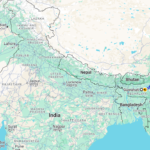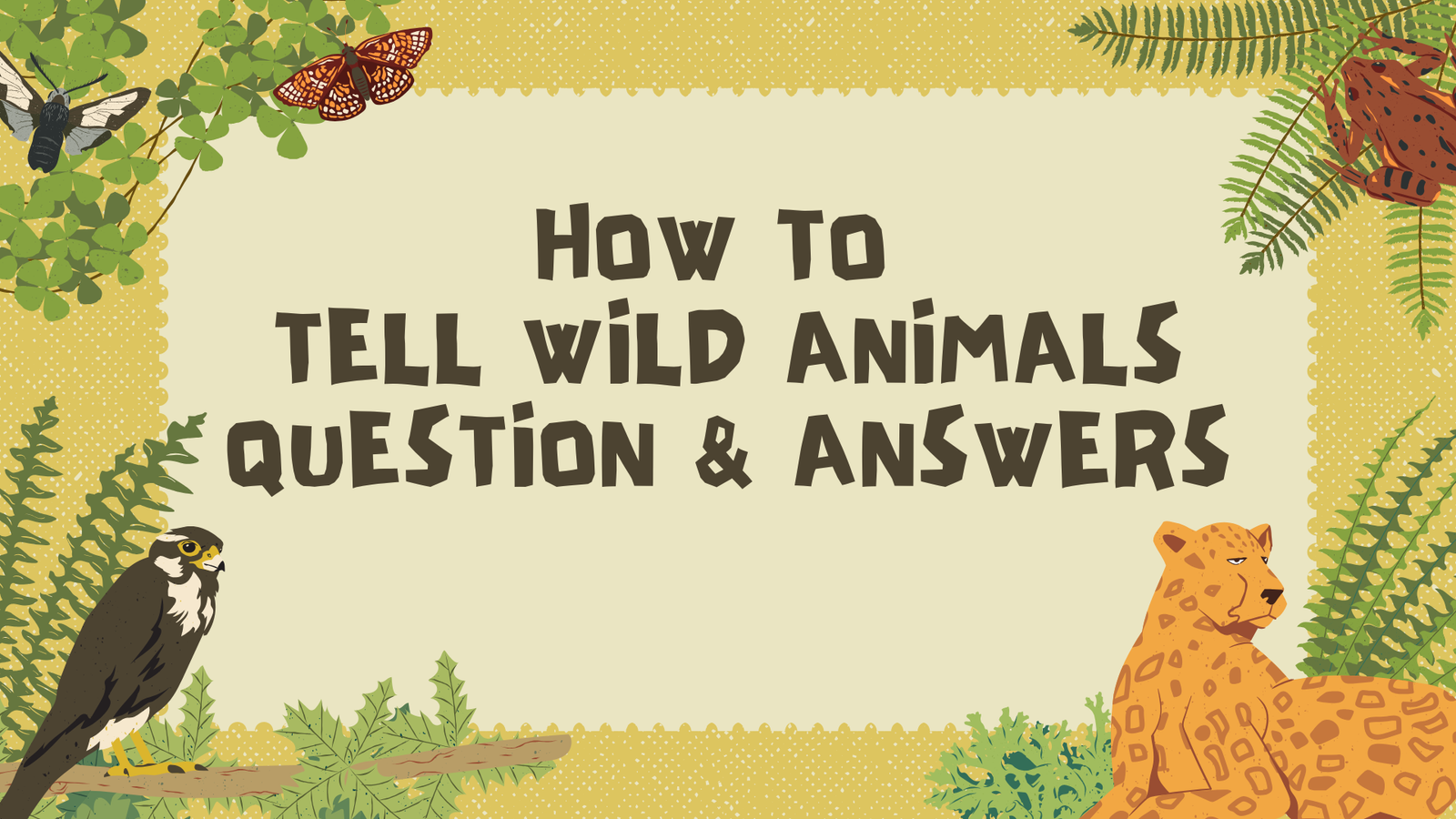Understanding how to tell wild animals apart can be both fascinating and challenging, especially when encountering them in their natural habitats or learning about them from literature. Whether you’re a student or a wildlife enthusiast, knowing the differences and characteristics of various animals is essential. In this blog, we’ll explore How to Tell Wild Animals by addressing frequently asked questions and offering detailed answers. This will help you identify key characteristics, behaviors, and traits, along with examples from literature that highlight their uniqueness.
Table of Contents
What is “How to Tell Wild Animals” About?
The phrase “How to Tell Wild Animals” can refer to multiple contexts, such as identifying animals in the wild or from educational literature like the famous poem by Carolyn Wells, which humorously describes how different wild animals behave. In this blog, we will cover both real-life identification tips and questions typically asked in academic settings.
Common Questions and Answers on How to Tell Wild Animals
1. How can you differentiate between a lion and a tiger?
Lions are social animals often found in groups called prides. They are usually tawny-colored with males having a distinctive mane. Tigers, on the other hand, are solitary animals with characteristic black stripes over their orange coats. Tigers are also larger than lions in most cases and prefer dense forests.
2. What is the best way to identify a leopard?
Leopards are known for their beautiful golden, spotted coats. They are smaller and more agile compared to lions and tigers. One distinguishing feature is their ability to climb trees, where they often drag their prey to avoid scavengers.
3. How can you tell a crocodile from an alligator?
Crocodiles have longer, V-shaped snouts and are typically found in saltwater habitats, while alligators have broader, U-shaped snouts and prefer freshwater environments. Additionally, when their mouths are closed, the fourth tooth on each side of a crocodile’s lower jaw remains visible, unlike alligators.
4. How to identify an elephant in the wild?
Elephants are easily recognizable due to their massive size, long trunks, and large, fan-like ears. African elephants have larger ears that resemble the shape of the African continent, while Asian elephants have smaller, rounder ears.
5. What are the unique traits of a giraffe?
Giraffes are the tallest land animals, known for their long necks and spotted coats. Their height allows them to feed on leaves high in trees, which other herbivores cannot reach. They also have long tongues, which help them grasp foliage.
6. How can you recognize a rhinoceros?
Rhinoceroses are large, thick-skinned animals with one or two horns on their snouts. They are herbivores and are often seen grazing in grasslands. Their poor eyesight is compensated by their keen sense of smell and hearing.
7. How do you tell the difference between a wolf and a coyote?
Wolves are generally larger with thicker fur and a broader face, while coyotes are smaller, with a more pointed snout. Wolves typically move in packs, whereas coyotes are more solitary or move in small groups.
8. How do you recognize a cheetah?
Cheetahs have a lean, slender body built for speed. They are known for their black “tear marks” that run from the eyes down to the mouth and their distinct spotted coat. Unlike other big cats, cheetahs do not roar; they chirp and purr.
9. How do you identify a jaguar in the wild?
Jaguars are often confused with leopards, but they are bulkier and have larger rosettes (the spots on their coat) with a black dot in the center. Jaguars are also more muscular and are excellent swimmers.
10. What’s the best way to spot a bear in the wild?
Bears are typically identified by their large, bulky bodies and powerful limbs. Depending on the species, their coats vary in color—black bears are not always black and can be brown, cinnamon, or even white. Grizzly bears have a distinctive hump on their shoulders.
11. How do you distinguish between a fox and a dog?
Foxes are smaller than most domestic dogs, with pointed ears, narrow snouts, and bushy tails. Their eyes have vertically-slit pupils, unlike dogs. Foxes are also nocturnal hunters, so you’re more likely to spot them at night.
12. How can you tell the difference between a hyena and a wild dog?
Hyenas have sloping backs with shorter hind legs, powerful jaws, and spotted coats. Wild dogs, on the other hand, have long legs, large rounded ears, and colorful coats with irregular patches of color. Hyenas also have a distinctive laugh-like vocalization.
13. How do you identify a zebra?
Zebras are famous for their black-and-white striped coats. No two zebras have the same pattern, making them unique. They are social animals, often found in herds, and are known for their strong kicks.
14. What distinguishes a kangaroo from other wild animals?
Kangaroos are native to Australia and are recognizable by their large hind legs, long tails, and ability to hop. Female kangaroos have pouches where they carry their young (joeys).
15. How do you recognize an ostrich?
Ostriches are the largest and fastest birds, though they cannot fly. They are characterized by their long necks, powerful legs, and small heads. They use their speed to escape predators, running up to 70 km/h (43 mph).
16. How can you tell the difference between a gazelle and an antelope?
Gazelles are a type of antelope but are smaller, more slender, and have lighter frames. They have large, dark eyes and curved horns, while larger antelopes, like elands, have heavier builds and straighter horns.
17. What’s the easiest way to spot a chimpanzee?
Chimpanzees are one of the closest relatives to humans, sharing 98% of their DNA with us. They have long arms, dark brown or black fur, and are highly social and intelligent, often seen using tools in the wild.
18. How do you recognize a moose?
Moose are the largest species of deer, identified by their long faces, broad, flat antlers (in males), and humped shoulders. They are found in cold, northern regions and are strong swimmers.
19. What are some characteristics of a flamingo?
Flamingos are known for their long legs, curved necks, and bright pink feathers. Their color comes from the carotenoid pigments in their diet. They often stand on one leg and are found in large colonies near lakes or lagoons.
20. How do you tell a buffalo from a bison?
Bison have large humps at their shoulders and massive heads, whereas buffalo (such as the African Cape buffalo) do not. Bison also have shaggy winter coats, while buffalo have smoother coats suited for warmer climates.
How to Identify Wild Animals: Key Tips
- Observe physical characteristics: Animals have distinct features like fur patterns, body shapes, and unique physical traits (horns, claws, etc.) that make them easy to identify.
- Pay attention to their behavior: Some animals, like wolves, hunt in packs, while others, like leopards, are solitary. Understanding behavioral patterns helps in distinguishing animals.
- Listen to sounds: Many wild animals have distinct calls or roars. For example, a lion’s roar can be heard from miles away, whereas a wolf’s howl is more melodic.
- Understand habitat preferences: Different animals prefer specific habitats. For instance, lions are commonly found in grasslands, while jaguars are often seen in tropical rainforests.
FAQs
-
How do I safely identify wild animals in the wild?
Always maintain a safe distance when observing wild animals. Use binoculars or a camera with a zoom lens for closer views, and never approach animals that could be dangerous.
-
What are some books to learn about wild animals?
Some popular books include “The Animal Kingdom” by David Burnie and “Wild Animals of the World” by Dieter Braun. For a humorous take, Carolyn Wells’ poem “How to Tell Wild Animals” is a fun read for younger audiences.
-
Can wild animals be identified by their footprints?
Yes! Many animals leave unique footprints. For example, a lion’s paw print is large and circular, while a bear’s footprint shows the claws clearly.
-
What’s the best way to stay safe while watching wild animals?
Always observe from a safe distance and use protective gear like sturdy boots and clothing. Stay in designated areas and follow the guidance of wildlife experts if available.
Related Posts
- Why are living organisms classified? : Biological Classification

- Wildlife Conservation Efforts in India

- Best Time to Visit Kaziranga National Park: Complete Guide

- How to Tell Wild Animals Questions and Answers: A Detailed Guide

- How to Tell Wild Animals Summary: A Fun and Engaging Overview

- How to Recharge Metro Card and Check Balance Online


